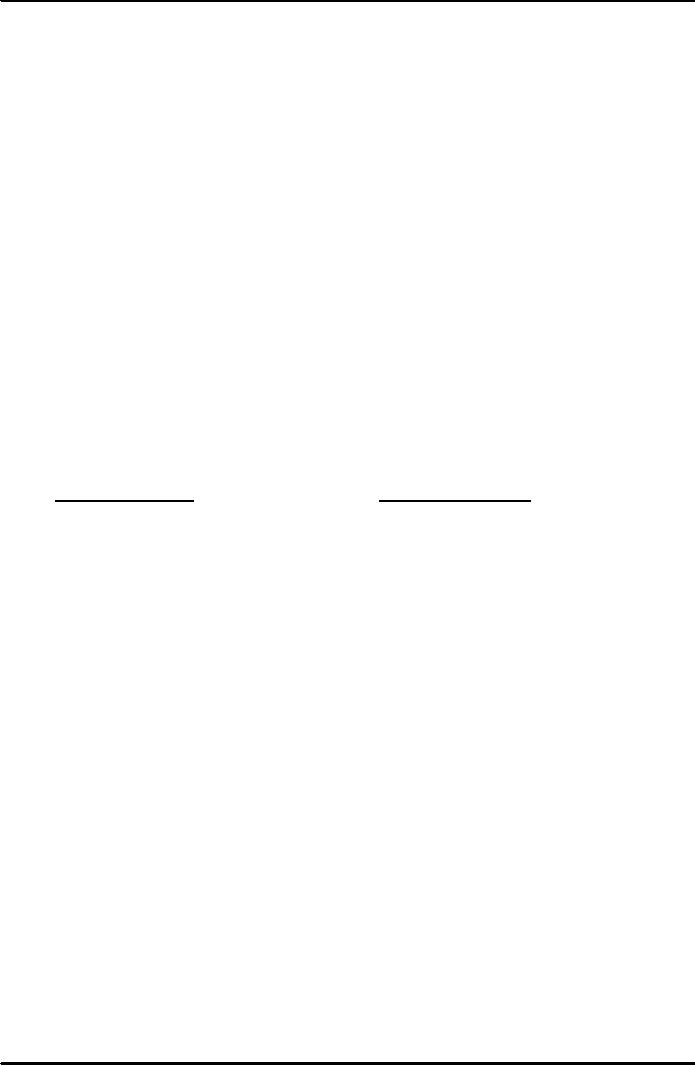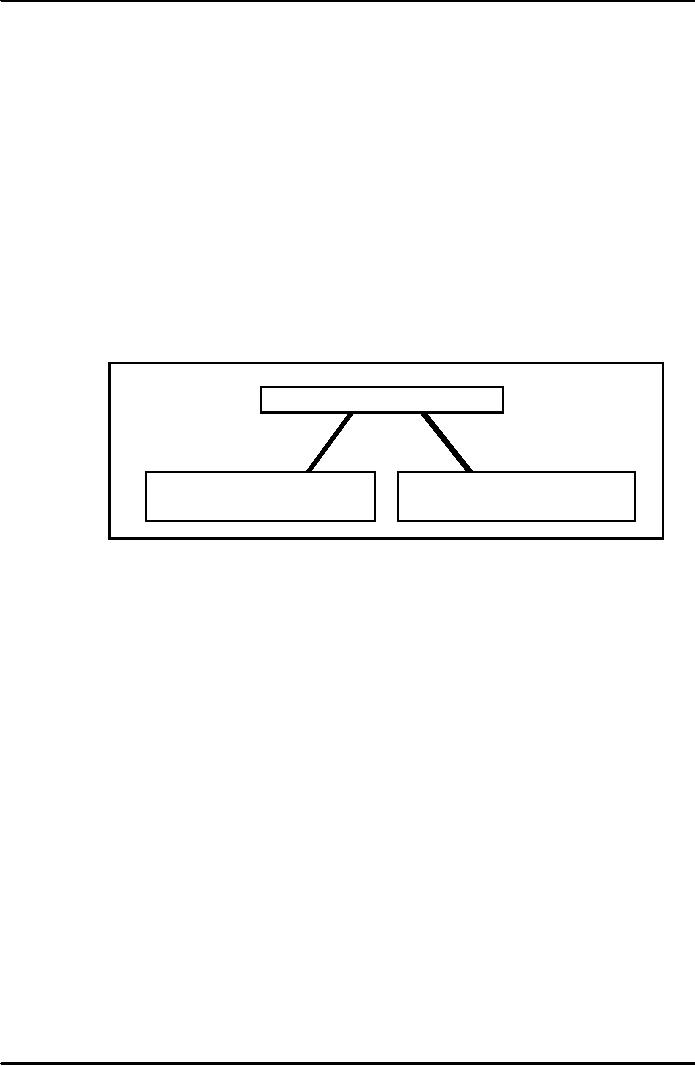 |
CIVIL SERVICE:What are the Functions Performed by the Government? |
| << HISTORY OF PUBLIC ADMINISTRATION – II |
| CIVIL SERVICE REFORMS:Implementation of the Reforms, Categories of the Civil Service >> |

Introduction
To Public
AdministrationMGT111
VU
LESSON
09
CIVIL
SERVICE
At the
end of the lecture the students
will be able to
understand:
1.
The concept of civil
service
2.
The structure of civil
service in Pakistan at the time of
independence.
What
is Civil Service?
Civil
service has he defined in the
Civil Servant Act 1973.
But this word also has
general meaning as
well,
which are that civil
means "public" and public
are the citizens of a country. By this
connotation it
means
that civil servants are a
group of people who serve
public and in that sense
civil service is
different
from
military service.
Words
like Public, Civil, and
Government are used interchangeably.
Officers and officials
working
in
government organization are all public
servants because they draw
their salaries from public
exchequer.
Recruitment
of Public Servants:
The
recruitment of civil servants takes
place by the following two
methods:
1.
Public Service Commissions (Federal &
Provincial) are constitutionally Grade 15
and above
2.
The autonomous organization recruit people directly
(test & interview by the
organization)
The
structure of Federal and
provincial Government is as
under:-
Provincial
Government
Federal
Government
Ministries
Department
Division/s
Directorate
Attached
Department
Autonomous
Bodies
Autonomous
Bodies
Example:
Development Authorities
Public
Enterprises
District/Tehsil
Office
At
the federal level the apex organization is `ministry',
for example Ministry of
Health and
Population.
The ministry is headed by
Minister each ministry may
have two or more than
two divisions.
Divisions
are usually also located in
Islamabad. Below Division is "attached
department". The
administrative
control of the department is with the
Division which is controlling
it. Autonomous bodies
are
much independent because, these
have their Board of Governors
who makes policy decision
for the
organization.
In this way these are independent
administratively.
What
are the Functions Performed by
the Government?
The
government performs these functions:
Maintains
Peace
Provides
Defence
It
collects Revenues and
It
Maintains currency
How
does it perform these functions? It
performs these functions through
its representatives
i.e.
public
servants or civil servant
who are paid salary from the
government treasury (exchequer). In
addition to
these
traditional functions modern governments
perform many additional functions.
These are:
-
It provides Utilities (electricity, telephone,
gas)
-
It maintain Government Accounts
-
It maintains Foreign
Relations
-
It maintains Cantonments
30

Introduction
To Public
AdministrationMGT111
VU
-
It
regulates, distributes and allocates
goods and services in the
society.
The
functions of today's government have
increased because of following
reasons:-
-
Population
that is provided services
has increased manifold and
hence the nature of
problems
social,
economic, political and global
problems have changed. In fact
these have become
complex.
-
The
territory of the government has increased
in size
-
Technological
improvement and
advancement
-
Because
of technological improvement the nature
specialization/division of labour has
changed
and
become more complex
Therefore,
in order to perform new
functions the governments changed the
structure and added
more
functions. At the time of independence Pakistan
inherited the civil service
structure which was
laid
out
by the East India Company
and subsequently modified by the
British government to its
own
requirement.
The structure of the services existing in
Pre-partition sub-continent was adopted in
Pakistan
with
little modifications. The following
two categories of the services
were maintained.
1.
All-Pakistan Services
2.
Central Services
All
Pakistan Services
Civil
Service of Pakistan
Police
Service of Pakistan
(IPS)
(Descendent
of ICS)
1.
The
All Pakistan Services: The
all Pakistan Service was
descendent of All-India Services.
The All
Pakistan
Service was created in
Pakistan. It comprised Civil
Service of Pakistan (CSP)
and the
Police
Service of Pakistan (PSP). Officers of
these services served under
central as well as the
provincial
governments. Officers when served under
the Provincial Government were
controlled
by
Provincial Government concerned
but the basic control
remained with centre.
2.
Civil
Services of Pakistan (CSP): The
CSP in Pakistan was the
descendent of the Indian
Civil
Service
(ICS) in India. At the time of independence It
consisted of: Former ICS officers,
Officers
who
served in World War 2, and
Finance service officers and Officers
selected by Competitive
Examination
held in 1949 & 1950
3.
Police
Service of Pakistan (PSP): The
PSP in Pakistan was the same
as Indian Police
Service
(IPS)
in sub-continent. At the time of partition it
consisted of those officers who
opted for
Pakistan.
The posts held by PSP officers included
Inspectors-Generals, Superintendents,
Deputy
Superintendents,
Assistant Superintendents etc.
Most of the PSP officers served under
Provincial
Government.
4.
Central
Services: Like
the Central Services before partition the Central
Services in Pakistan
were
controlled
by Central government. Before the Administrative
Reforms (1973), there were
13
Central
Services which are discussed
below:-
i.
Pakistan
Foreign Services (PFS): The
PFS offices are officers working
diplomatic
missions
abroad. In the beginning, specialized
duties were also performed
by PFS officers.
But
separate services were constituted
which met the requirements
for specialized jobs
in
foreign
missions.
31

Introduction
To Public
AdministrationMGT111
VU
ii.
Accounts
Services:
These services included the Pakistan
Audit and Accounts
Service
(PAAS),
Pakistan Military Accounts Service
(PMAS) and Pakistan Railway
Accounts Service
(PRAS).
The
officers belonging to the services held
post pertaining to finance
and accounts ministries.
The
offices
included ministries, attached
departments, subordinate offices, corporations
etc. As financial
advisors,
accountant-general, auditors-general
etc
iii.
Pakistan
Customs and Excise Services (PCES):
These were formally formed
in 1959. It
was
the combination of Sea Customs Service
and Central Land Customs and
Excise Services.
The
posts included Assistant Collector,
Deputy Collector and the
posts with corresponding
status
in CBR.
iv.
Pakistan
Taxation Service: It
consisted of junior officers promoted
from provincial and
class
II services on ad-hoc basis. In
1957, it was upgraded to
class I status. It held
posts of
commissioner
of income tax, deputy commissioner of
income tax, income tax
officer etc.
v.
Pakistan
Military & Land Cantonment
Service: Officers of this
service were appointed
as
cantonment
Executive offices and were in-charge of
maintenance and control of
lands within
the
cantonment areas as well as the local
governments.
vi.
Pakistan
Postal Service: It
was constituted by combining: Pakistan
Postal Service and
Telegraph
Traffic Service. Telegraph Engineering
Service. In 1965, the Telegraph
Service was
separated.
vii.
Trade
Service of Pakistan: It
was created to meet the
requirements in commercial fields
in
Pakistan
and in missions abroad. This
cadre was formally constituted in
1970.
viii.
Information
Service of Pakistan (ISP): It
was formed in 1963 for
posts requiring
journalistic
qualifications for appointments in Pakistan
and in foreign
missions.
ix.
Economic
Pool: In
1950, an economic pool was
constituted. Its officers were drawn
from
CSP
and from accounts and
finance services. However, it was
not made a regularly
constituted
service. The other services
were:
x.
Central
Secretariat Services.
xi.
General
Administrative Service.
Conclusions
What
we conclude is that the service
structure of the colonial period
was adopted. The
political
situation
of the country did not
permit to review the structure. The
structure that was inherited
more biased
towards
maintaining law and order, the
structure was not geared
towards the development of the new
country.
32
Table of Contents:
- INTRODUCTION:Institutions of State, Individualism
- EVOLUTION OF PUBLIC ADMINISTRATION:Classical School, The Shovelling Experiment
- CLASSICAL SCHOOL OF THOUGHTS – I:Theory of Bureaucracy, Human Relation Approach
- CLASSICAL SCHOOL OF THOUGHTS – II:Contributors of This Approach
- HUMAN RELATIONS SCHOOLS:Behavioural School, System Schools
- POWER AND POLITICS:Conflict- as Positive and Negative, Reactions of Managers, Three Dimensional Typology
- HISTORY OF PUBLIC ADMINISTRATION – I:Moghul Period, British Period
- HISTORY OF PUBLIC ADMINISTRATION – II
- CIVIL SERVICE:What are the Functions Performed by the Government?
- CIVIL SERVICE REFORMS:Implementation of the Reforms, Categories of the Civil Service
- 1973 CONSTITUTION OF PAKISTAN:The Republic of Pakistan, Definition of the State
- STRUCTURE OF GOVERNMENT:Rules of Business, Conclusion
- PUBLIC AND PRIVATE ADMINISTRATION:The Public Interest, Ambiguity, Less Efficient
- ORGANIZATION:Formal Organizations, Departmentalization
- DEPARTMENTALIZATION:Departmentalization by Enterprise Function, Departments by Product
- POWER AND AUTHORITY:Nature of Relationship, Delegation of Functional Authority
- DELEGATION OF AUTHORITY:The Art of Delegation, Coordination
- PLANNING – I:Four Major Aspects of Planning, Types of Plans
- PLANNING – II:Planning ProcessThree principles of plans
- PLANNING COMMISSION AND PLANNING DEVELOPMENT:Functions, Approval Authority
- DECISION MAKING:Theories on Decision Making, Steps in Rational Decision Making
- HUMAN RESOURCE MANAGEMENT (HRM):Importance of Human Resource, Recruitment
- SELECTION PROCESS AND TRAINING:Levels at Which Selection takes Place, Training and Development
- PERFORMANCE APPRAISAL:Formal Appraisals, Informal Appraisals
- SELECTION AND TRAINING AND PUBLIC ORGANIZATIONS:Performance Evaluation,
- PUBLIC FINANCE:Background, Components of Public Finance, Dissimilarities
- BUDGET:Components of Public Income, Use of Taxes, Types of Taxation
- PUBLIC BUDGET:Incremental Budget, Annual Budget Statement, Budget Preparation
- NATIONAL FINANCE COMMISSION:Fiscal Federalism Defined, Multiple Criteria
- ADMINISTRATIVE CONTROL:Types of Accountability, Internal Control, External Control
- AUDIT:Economy, Effectiveness, Objectives of Performance Audit, Concepts
- MOTIVATION:Assumptions about Motivation, Early ViewsThree Needs
- MOTIVATION AND LEADERSHIP:Reinforcement Theory, Leadership, The Trait Approach
- LEADERSHIP:Contingency Approaches, Personal Characteristics of Employees
- TEAM – I:Formal & Informal teams, Functions of Informal Groups, Characteristics of Teams
- TEAM – II:Team Cohesiveness, Four ways to Cohesiveness, Communication
- COMMUNICATION – I:Types of Communication, How to Improve Communication
- COMMUNICATION – II:Factors in Organizational Communication, Negotiating To Manage Conflicts
- DISTRICT ADMINISTRATION:The British Period, After Independence, The Issues
- DEVOLUTION PLAN – I:Country Information, Tiers or Level of Government
- DEVOLUTION PLAN – II:Aim of Devolution Plan, Administrative Reforms, Separation of powers
- POLITICAL REFORMS:District, Tehsil, Functions of Union Council, Fiscal Reforms
- NEW PUBLIC MANAGEMENT (NPM):Strategy, Beginning of Management Approach
- MANAGERIAL PROGRAMME AGENDA – I
- MANAGERIAL PROGRAMME AGENDA – II:Theoretical Bases of Management, Critique on Management